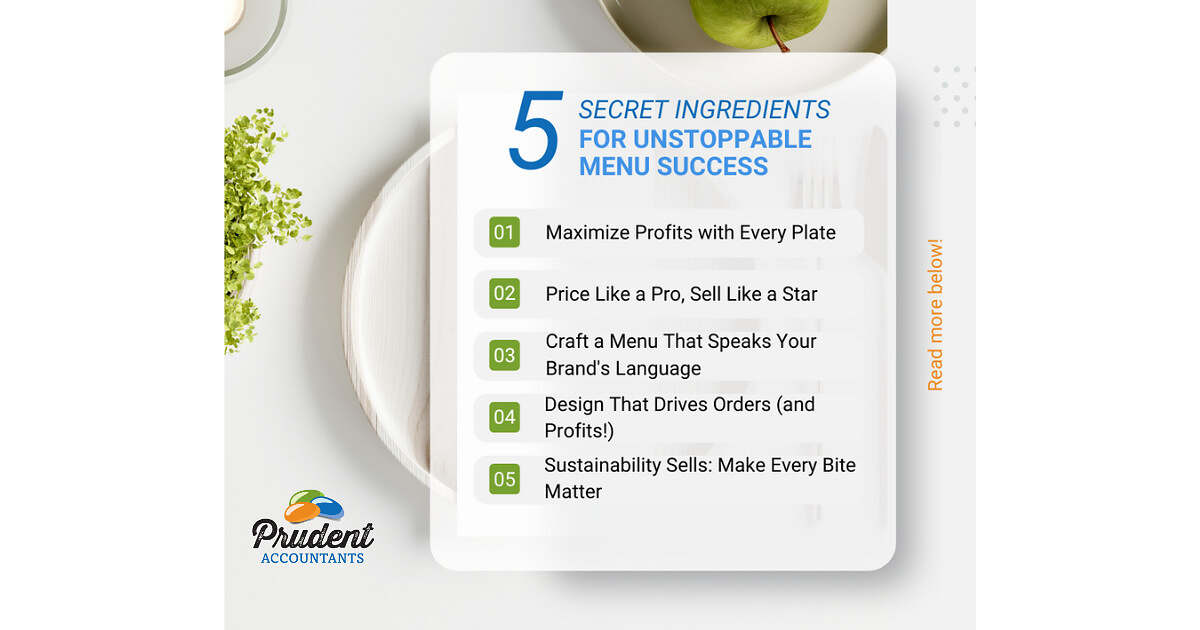The Devil is in the Menu: How Smart Menu Engineering Drives Success in the Food Industry

In business, we often hear the saying, “The devil is in the details.” It’s a reminder that even the smallest things can make or break a project. But in the food industry, the devil isn’t just in the details—it’s in the menu. The menu is the lifeblood of any restaurant or food business. It’s more than just a list of dishes; it’s a carefully engineered tool that can drive revenue, reduce costs, and create a memorable dining experience.
The Menu: Your Silent Salesperson
Your menu is more than a catalog of food. It’s your silent salesperson, subtly guiding customers toward high-margin dishes, and if done right, can make your operation more efficient and profitable. Every dish, every price, every placement matters. If you overlook these small details, your business could be missing out on significant opportunities.
1. The Art of Balancing Profit and Popularity
One of the first rules of menu engineering is understanding that not all dishes are created equal. Some are stars, others are just taking up space. You may have dishes that are popular but not very profitable (the “Plowhorses”) or dishes that are profitable but hardly sell (the “Puzzles”). Then, there are the “Dogs”—items that are neither popular nor profitable.
This is where the devil lies. By analyzing sales data and food costs, you can identify which dishes are worth promoting and which ones are dragging you down. Focusing on high-margin items that also appeal to your target customers is a key strategy for maximizing your revenue.
For example, if you run a health-conscious café, you might find that your smoothie bowls are both popular and profitable. Highlight these on your menu and promote them heavily through your marketing. Meanwhile, your avocado toast might be popular but cost you more in ingredients and labor. A slight price increase or portion adjustment could make this dish more profitable without alienating customers.
2. Pricing: More than Just Numbers
The devil truly shows up when it comes to pricing. Pricing isn’t just about covering costs and making a profit; it’s also about perception. Customers might avoid dishes priced too high but perceive a dish as low quality if it’s priced too low.
Menu engineers often use techniques like price anchoring to guide customer choices. By placing a high-priced item near moderately priced ones, the mid-range options suddenly seem more reasonable, pushing customers to choose those. For example, a $25 dinner option next to a $40 premium entrée might encourage more orders of the $25 dish, which could be a high-margin item.
Another trick is avoiding the use of currency symbols, which can subconsciously make people think less about cost. Instead of $15.00, simply list “15” next to the dish. It’s a small detail, but it can have a big impact on how customers perceive value.
3. A Menu That Matches Your Values
In today’s food landscape, consumers are more discerning. They don’t just want to eat; they want to feel good about what they’re eating. If your business caters to health-conscious customers, your menu should reflect that in both the food and its presentation.
This means avoiding cheap fats, sugars, and large, wasteful portions. Offer nutrient-dense, balanced meals that align with their values. For instance, a grilled salmon and quinoa bowl could appeal to customers who value lean proteins, healthy fats, and sustainable ingredients. Smaller portion options or build-your-own meals reduce waste while catering to individual preferences.
And it’s not just about the food. Today’s diners also care about how they pay. If your demographic finds tipping wasteful, consider an all-inclusive pricing model that eliminates gratuity. This kind of transparency can create a better customer experience and align your business with their values of simplicity and fairness.
4. Visual Design: The Hidden Power of Presentation
Here’s where the details really show their power. How your menu is designed can influence what your customers order. Eye-tracking studies have shown that customers tend to look at specific parts of a menu more than others, like the top-right corner. By strategically placing your most profitable items in these spots, you can subtly nudge customers towards them.
Using boxes, borders, or icons to draw attention to specific items can also boost sales. High-margin items like specialty coffees, smoothie bowls, or signature dishes should stand out visually. Even the font and color scheme play a role. A clean, easy-to-read menu gives the impression of a well-organized, professional establishment, while a cluttered or overly complicated menu can frustrate customers and lower sales.
5. Customization and Sustainability
Your customers care about health, sustainability, and avoiding waste. The devil is in customization and ingredient efficiency. Offer customizable options that let customers create their own meals, whether it’s selecting portion sizes or picking ingredients. This doesn’t just enhance their experience; it also reduces food waste and allows you to manage inventory more effectively.
Consider offering sustainable packaging or discounts for customers who bring their own containers, aligning your business with eco-conscious values. Sustainability isn’t just a trend; it’s a priority for many customers, and your menu should reflect that.
The Devil Works in Your Favor—If You Let Him
Ultimately, the devil in the menu can work in your favor. By paying attention to the fine details of pricing, design, item selection, and customer preferences, you can turn a simple piece of paper (or digital display) into a powerful tool for success.
In the food industry, the menu isn’t just a formality—it’s the cornerstone of your business. Master it, and you’ll find that every small detail adds up to big rewards. Don’t let the devil slip through unnoticed; make him work for you, one perfectly crafted menu at a time.








